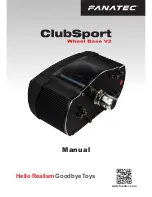
4
IMO-215EN
3. Mount the actuator to the valve following the directions
in the AMI (Actuator Mounting Instructions) or valve IMO.
4. Connect a regulated air supply to the 3/8" NPT fitting
in the diaphragm casing (15). CAUTION: The maximum
operating pressure is 100 psi (6.9 BAR).
5. Adjust the stop screws (19) by releasing the jam nut (23)
and turning. Stops can only be adjusted when driver
arm (3) is off the stop screws being adjusted. (Maximum
rotation adjustment ±5˚.) Be sure to retighten jam nut (23).
2.1
Operation
The operating pressure, output torque and drive type is
determined by the actuator designation. Maximum oper
ating pressure is 100 psi (6.9 BAR). (See Table 2)
Actuator designation example: QPX4C/K40 is a series
QPX4 spring diaphragm actuator that has a 60 psi (4.1
BAR) spring, an end of stroke output torque of 200 FT•LBS
(272 N•m) and uses a 40 mm female key to drive the valve.
Before operating make sure all tapped holes in the body
which are not being used are resealed with fasteners.
3
MAINTENANCE
Before working on a
Quadra-Powr
X actuator, note that all
fasteners except socket head shoulder screw (8) and hex
head cap screw (88, on QPX4 & QPX5) are metric.
TABLE 2
Actuator
Series
Spring
Version
Operating
Pressure in
psi (BAR)
End of Spring
Stroke
Torque in
FT•LBS (N•m)
Drive Type
QPX1
C
60 (4.1)
25 (34)
K15 - 15 mm Keyed
M - 9/16" Square
QPX2
A**
B
C
D
20* (1.4)
40 (2.8)
60 (4.1)
80 (5.5)
11 (15)
38 (52)
57 (77)
74 (100)
K20 - 20 mm Keyed
M - 9/16" Square
QPX3
A
B
C
D
20* (1.4)
40 (2.8)
60 (4.1)
80 (5.5)
26 (35)
76 (103)
114 (155)
146 (198)
K35 - 35 mm Keyed
M - 3/4" Square
QPX4
B
C
D
40 (2.8)
60 (4.1)
80 (5.5)
153 (207)
229 (310)
294 (399)
K40 - 40 mm Keyed
M - 1" Square
QPX5
B
C
D
40 (2.8)
60 (4.1)
80 (5.5)
305 (414)
458 (621)
587 (796)
K40 - 40 mm Keyed
M - 1" Square
* For Direct Control Applications
** QPX2A only available with QPX1 drive type options.
Under normal operating conditions the actuator requires
only periodic observation to ensure proper adjustment.
Standard replacement of “soft” parts in
Quadra-Powr
II
actuators consists of items numbered 6, 14, 31, 62 and 64.
See REPAIR KITS/SPARE PARTS Section.
1. When replacing the diaphragm use caution and be
sure the air supply is disconnected. Back off nuts (29)
from the hex head screws (27), holding the diaphragm
casing and spring housing together until the nuts are
flush with the hex head screw ends. Do not remove the
nuts completely from the hex head screws. If tension
still exists on the hex head screws, then the spring
package is not properly contained. Stop disassembly:
retighten nuts and return the actuator to the factory. If
the spring package proves to be intact remove the
nuts (29) and remove the hex head screws (27).
2. Lift off diaphragm casing (15). Remove hex head cap
screw (88) and retaining washer (89). Remove
diaphragm (14).
3. Inspect the inside of both the diaphragm casing (15) and
the spring housing (32) for any rough spots or foreign
matter which may cause abrasion to the diaphragm.
4. Place the new diaphragm (14) on the diaphragm
retainer (10). Do not pinch or stretch the diaphragm.
Attach with washer (89) and cap screw (88). Tighten to
value in (Table 3) keeping spring housing (32) holes
aligned with diaphragm (14) holes. Place the
diaphragm casing (15) on the spring housing (32) and
line up all the holes.
5. Insert hex head screws (27) in all holes. Do not force the
hex head screws through the diaphragm. Install nuts (29)
on screws and tighten uniformly using the standard
practice of tightening diametrically opposite bolts in
sequence with the torque requirements from (Table 3).
3.1
Disassembly
When disassembly of the actuator is required for mainte
nance, remove the actuator to a clean well lit area. Handling
of the actuator is accomplished by using lifting straps. See
Section 1.2.
Prior to disassembling the actuator, obtain the following
tools: two (2) M10 wrenches, preferably one being a ratchet,
one (1) hex (Allen) wrench, 3 mm for QPX1, 5 mm for QPX2,
3 and 4, 6 mm for QPX5, one (1) screwdriver, one (1) plastic
faced mallet.
1. Remove the cover (5) by removing six (four on QPX1)
socket cap screws (21). If the cover cannot be removed,
tap it with a plastic hammer to break the adhesion of
the paint between the body and cover joint.
2. Use air pressure to remove spring preload by partially
stroking the actuator. If the diaphragm (14) is ruptured,
replace as instructed in the previous section.
3. To remove the socket shoulder screw (8) (or socket cap
screw in QPX1) that holds the clevis (7) to the driver arm
(3), first apply some heat to the lower arm to loosen
the Loctite® on threads of the socket shoulder screw.
4. Slowly increase air pressure until the driver arm (3)
moves slightly off the stop screw (19). Remove the
socket shoulder screw (8).


























